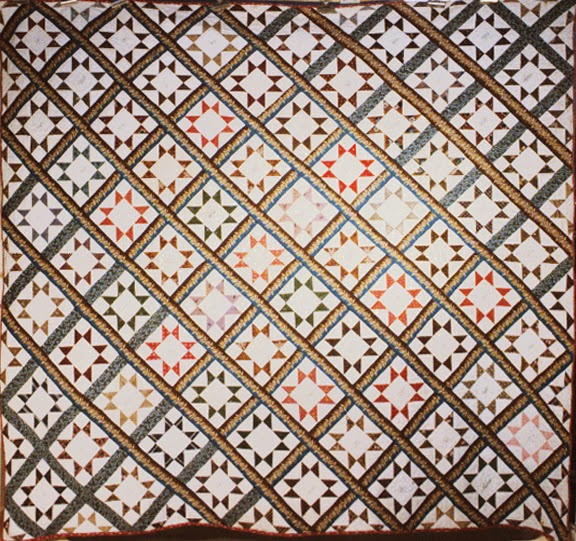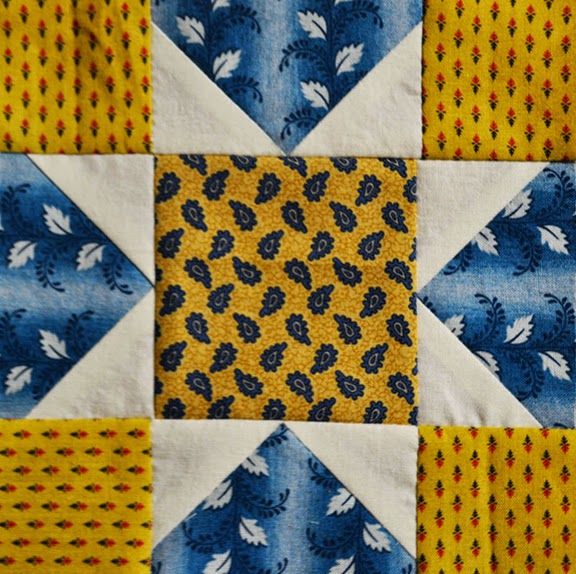Becky Brown reproduction block
Vintage indigo print from early 19th century
The figure is slightly blue in this print with a background we might call navy blue.
Detail of a quilt date-inscribed 1833 by Elizabeth Kimbrough Neal Brockinton's mother.
Collection of the Briscoe Center.
Perhaps three indigo prints or one navy indigo and two lighter Prussian blues. There were other blues too.
See more here:
Indigo prints featuring white or pale blue figures on navy blue grounds are seen in our earliest
quilts.
Date-inscribed 1795, Jones, Art Institute of Chicago
The indigo figures in these early prints tend to be spotty and rather minimal in design.
An early-19th-century pocket
with an indigo blue on blue print in the star.
You wore a pocket under a slit in your skirts to
stash your hankie and your keys.
Stars in the Sashing, mid-19th century? from Stella Rubin
The classic two color quilt: It looks like a solid indigo here,
which is a possibility, but a detail photo probably would
reveal a minimal white on blue print.
Detail of a worn nine-patch quilt from about 1820-1850.
The scraps of indigo are more colorfast and the fabric is more durable than many of the other prints.
Indigo blues are often the best survivors in these early 19th-century scrap quilts.
I did not find many indigo prints featured in mid-century scrap quilts. More complex Prussian
blue prints were so popular in the 1840s and '50s that indigo must have looked hopelessly old-fashioned and primitive. Of course it was old-fashioned and primitive---part of the charm.
Date-inscribed 1843, from the Historic New England collection
The navy blue here could be a solid indigo but it is more likely a small print. Note the damage on the left lower corner---possibly an encounter with a strong bleaching agent. Indigo is usually colorfast.
Mid-19th century indigo staple print
Small x's for a figure, set in a half-drop repeat.
The figure has a touch of blue indicating the cloth may have been dyed light blue with indigo before the resist paste was printed. The cloth was then dyed to a darker blue and when the resist chemical was removed the pale blue remained.
Vintage quilt, date-inscribed 1843, Elanor A. Robinson
Double dots set in a half drop repeat.
We are beginning our time travel in the mid-19th century so we will begin with the simple indigo prints used then.
For William Dudley Blodget, date-inscribed 1867
Single dots set in a half drop repeat---this repeat results in a diagonal grid, a design idea quite fashionable during the 1840-1870 era.
Knitter about 1860
A half-drop repeat was THE look during
the sixties.
Date-inscribed 1845, M. Lasher
A dot: You get the picture about the repeat.
A dot repro
Here's a recent picture from eBay. How old?
Indigo stars---not much of a clue.
But it looks like the blue print is a single print throughout the quilt, and it's simple. I'm guessing
before 1880.
The corded, stuffed quilting in the border is a better clue---probably before 1860.
Vintage indigo star print
The simple figure here is a five-pointed star, a flag print.
Vintage block from 1875-1900
These little stars in white on indigo blue were fashionable after the Civil War but you also
see them earlier. I saw them referred to as "flag prints" in an 1875 catalog from Montgomery Ward.
Vintage quilt date-inscribed 1846 A.B. Ruby
Vintage block from 1875-1900
Two reproduction star prints from Moda,
Left: Old Glory Gatherings from Primitive Gatherings:
Right Lexington by Minick & Simpson
Cathy's vintage top pictured on Cyndi's blog
The stars are set with sashing of a flag print barely visible here at the bottom.
Hard top to date because the prints are such classics.
Vintage block about 1880-1900
Orange madder-style prints and complex indigos.
This woman loved pattern.
We'll return to indigo when we go towards the end of the 19th century, the heyday of indigo prints. The dating rule is: The more variety in the indigo prints the closer to 1900.
Reproduction star by Becky Brown with
3 indigo prints and 1 shirting
Another style change towards the end of the century: quiltmakers liked to combine indigo ground prints with prints in other colors.
Vintage block about 1890-1920
These later indigos with a variety of figures are more fun to make so you might copy them now.
Vintage stars about 1890-1920
Gretchen's Reproduction Cheddar Block
The indigo and chrome repros really capture the late-19th-century look.
Vintage block about 1890-1920
Older block, a single, simple print
Reproductions
Reproduction quilt by Julie Hendrickson, Blue and Brown quilt
from History Repeated I.
The triple dot is the perfect mid-century indigo.
Two simple figures in half-drop, diagonal repeats by
Nancy Gere. Good for early indigo reproductions.
Indigo Revival from Minick and Simpson
who often do indigo reproduction prints.
Spinning Stars by Minick and Simpson using their Lexington line
Setting idea for your stack of star blocks:
A Border of Stars Set on Point
Vintage Quilt dated 1822 by Fanny Hurlbutt.
Documented in the Connecticut Quilt Project. Photo from the Quilt Index.
See the full strip quilt here:
Kathie Ratcliffe, detail of Leesburg, one of her miniature quilts
in the Star of Bethlehem design.
Kathie Ratcliffe, Star of Bethlehem
Bettina Havig, Peace Haven
Match the setting triangles to the star backgrounds and
the stars float.
Connie Chunn, Mary's Harvest, 2006
A great finish to a tiny medallion.
Sue Garman, Ancient Stars
One More Thing About Indigo Blue
Indigo prints have been popular around the world because the dye process, while complicated, is reliable and produces beautiful, durable results. Indigo dyers created pattern on cotton in two primary ways.
Samples from the IQSC's exhibit Indigo Gives America the Blues Timeline.
One method is to use a resist to produce a figure, what we might call a batik. A thick substance (wax or paste) is printed on the fabric which is then dyed in an indigo bath. When the paste is removed: a blue ground with a white or pale blue figure. Resist Printing above.
The other is to dye the cloth blue and then apply a discharging chemical that bleaches out the figure. Discharge Printing above.
I am relieved to know most experts say it is very hard to see the difference between these two processes, especially with the industrial printing in the second half of the 19th-century. Sometimes it's obvious, but don't worry that you can't tell which is which in an old print. (If it's a new print it's screen printed---unless it's a true batik.)
See a great online exhibition on indigo dyeing at the International Quilt Study Center and Museum's website at Indigo Gives America the Blues.














7w~~60_3.jpg)







.jpg)












.jpg)





















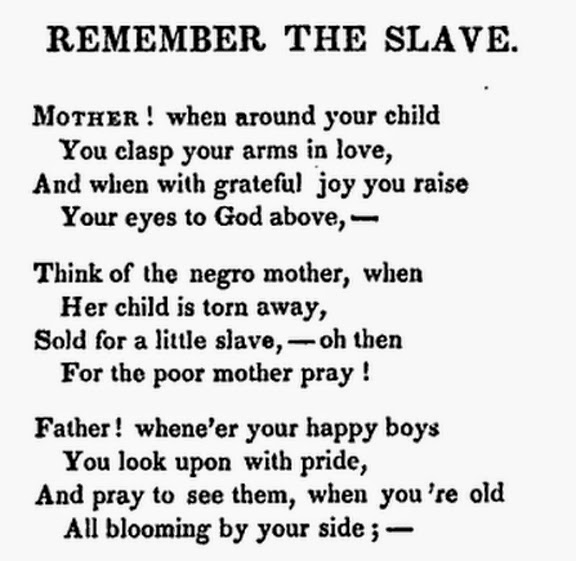






















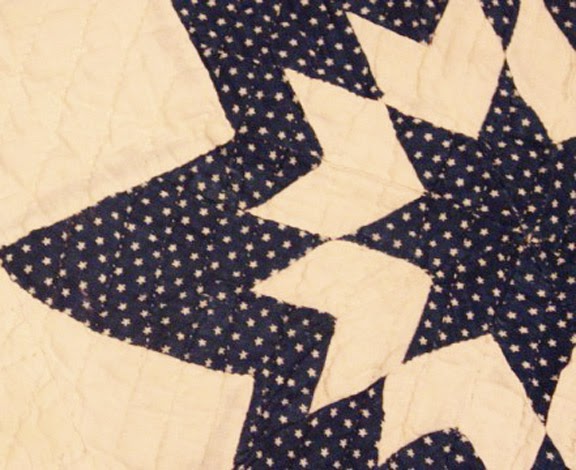























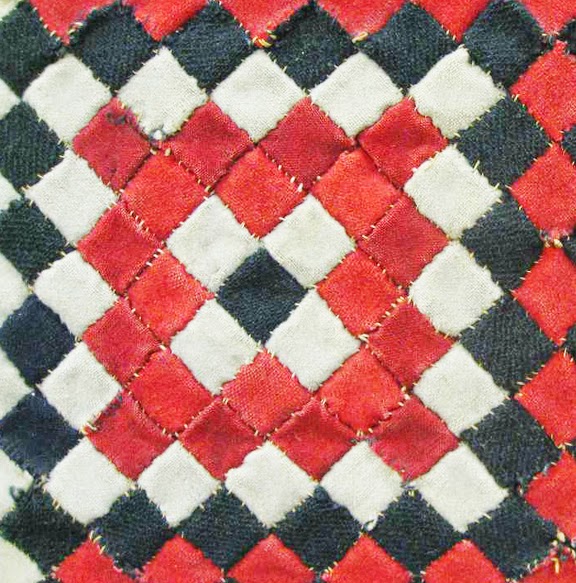

















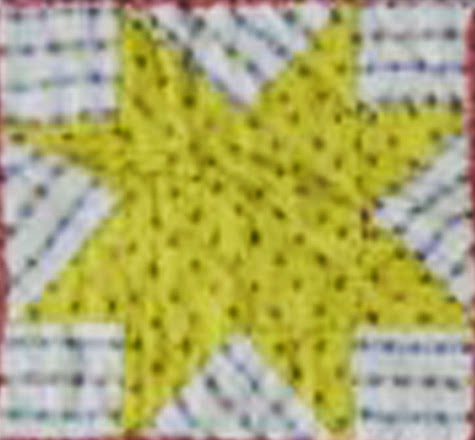

.jpg)





















.jpg)















r5KhCKBBMdliW0gCw~~_3.jpg)

























































.jpg)






















.jpg)


























.jpg)




























































.jpg)








.jpg)







QE9s3HFf3cBRo7T(UNsQ~~60_57.jpg)




.jpg)




















